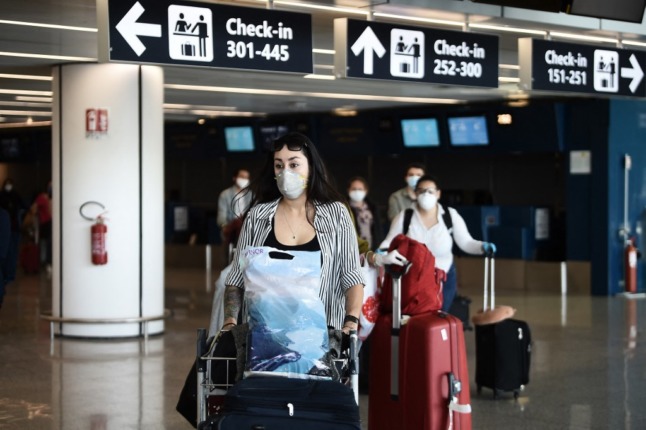Italy is full of unique destinations, from beautiful beaches to millennium-old architecture. No wonder the country gets so many visitors every year, especially during the summer months.
However, coronavirus infection rates are increasing in the country. Some regions, including Lazio, where Rome is located, and Veneto, the home of Venice, are classified by the Health Ministry as high risk.
With that in mind, here is what you should know about the pandemic in Italy and what to do in case you test positive.
What are the current entry rules?
First things first: what do you even need to enter Italy? Are there any coronavirus restrictions? The answer is no.
Travel to Italy for any reason, including tourism, is currently allowed without restrictions from all countries. In addition, since June, Italy has scrapped the requirement to show proof of coronavirus vaccination, recent recovery or a negative test from travellers.
There is also no need to fill in any online forms.
What restrictions do exist?
The main Covid-related restriction you will find in Italy is a strict face mask mandate for all forms of public transport, except for flights (domestic and international). These rules should remain in place at least until the end of September.
The masks required are the higher-grade FFP2 masks, and you should wear them on buses, trains, taxis, and all forms of public and shared transport.
READ ALSO: At a glance: What are the Covid-19 rules in Italy now?
Face masks also remain obligatory in hospitals, care homes and other healthcare facilities.
However, there is no need to wear face masks in public open or indoor public spaces – though it is recommended, especially in crowded areas.
Where can I get tested?
If you want to be on the safe side or have any coronavirus symptoms, it is possible to get tested in Italy.
If you need to get tested while in Italy because you suspect you may have Covid-19, you must minimise your contact with anyone else.
READ ALSO: How tourists and visitors can get a coronavirus test in Italy
The Italian health ministry says you should isolate yourself where you’re staying and call a doctor, Italy’s nationwide Covid hotline (1500), or the regional helpline where you are (complete list here) for assistance.
They will help you arrange an emergency test. Do not go to a medical centre or pharmacy in the meantime.
If you do not have symptoms, tests can be carried out without a prescription at Italy’s airports, pharmacies, labs, testing centres, or even at your accommodation via private doctors.
READ ALSO: The essential Italian phrases you need to know for getting tested and vaccinated
Fast antigen tests are also widely available in pharmacies in Italy.

What are the self-isolation rules if I test positive?
The health ministry’s current rules state that anyone who tests positive while in Italy is required to immediately self-isolate for a minimum of seven days: that’s if the person in question is fully vaccinated and boosted, or has completed their primary vaccination cycle, or was certified as being recovered from Covid less than 120 days ago.
That period is extended to 10 days for those who aren’t fully vaccinated and also boosted or those who recovered from Covid or completed their primary vaccination cycle more than 120 days ago.
READ ALSO: Italy to keep quarantine rules in place as Covid cases rise
In either case, the infected person must have been symptomless for at least three days to exit quarantine (with the exception of symptoms relating to a lost sense of taste or smell, which can persist for some time after the infection is over).
The patient must also test negative for the virus via either a molecular (PCR) or rapid antigen test on the final day of the quarantine to be allowed out. If you keep testing positive after that, you may stop isolation only at the end of 21 days.
Italy has one of the strictest self-isolation rules, so keep that in mind if you plan your summer holidays here.
Where can I self-isolate?
That will depend. You might be able to stay in your existing accommodation but might also be required to transfer to a state hospital or other government-provided accommodation. Check with the local authorities.
Additionally, you may need to fund accommodation – if only to extend your hotel stay, for example.
What if I need treatment?
If you are an EU citizen, your country’s healthcare can cover state treatments. The same if you are a UK citizen and hold an EHIC or GHIC. The e-card, European health card, EHIC or GHIC will not cover private treatments, though.
If you are a third-country citizen, you must check exactly what your travel insurance covers. In general, people travelling to Europe from abroad are recommended to have travel insurance that covers medical treatments, and you might also be insured through a credit or debit card. So, it is worth checking and planning.
Where can I get more information?
The Italian Health Ministry has a Covid-19 hot site in English for travellers where you can find helpful contact and the latest restrictions and information.



 Please whitelist us to continue reading.
Please whitelist us to continue reading.
Member comments